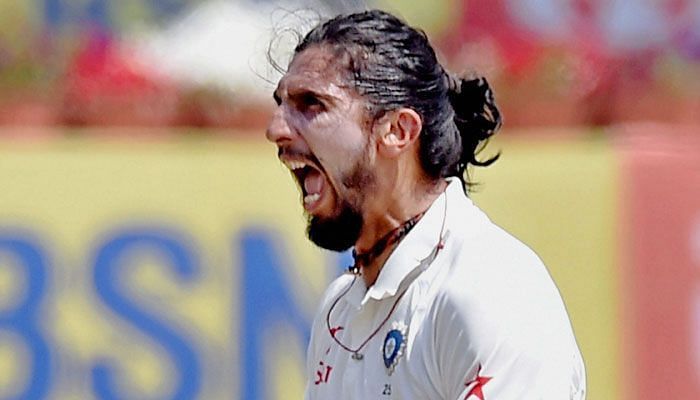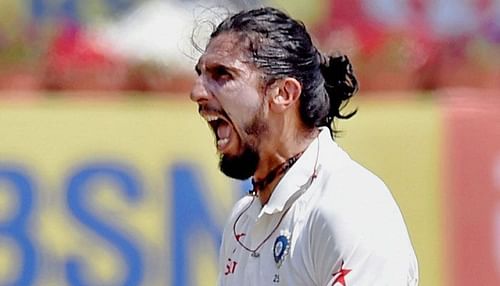
What does the future hold for Ishant Sharma?

"Ek aur daalega,"
"Haan daalunga"
With these words, a tall 18-year-old bowler gave his cap to the umpire, strode back to his mark and ran in.
Off the third ball, he pitched one on off stump, got it to straighten, took the outside edge and he, forever, went into Indian cricketing folkore.
Ishant Sharma was the bowler. Ricky Ponting the batsman. Perth the venue.
For the next 8-9 months or so, he was the toast of Indian cricket.
When Australia arrived in India, the long-haired assassin once again found Ponting's number in Mohali when he bamboozled him with a delivery that pitched and went through his defense.
It is often said that a cricketer's true skills are seen in his second full year at the international level, when teams figure a way to counter the bowler with all the technology around
After claiming 38 wickets in 13 Tests in 2008, Ishant could muster up a mere 43 wickets in his next 15 Test matches that he played in 2009 and 2010 combined.
A push in the upward direction was needed and that came in 2011, when he had his best year with the ball, claiming 43 wickets in 12 matches.
However, the storm was formed by yet another frustrating phase of lull which saw him restricted to just playing Test cricket for a few years.
2014 and the arrival of the maturity phase
In 2014, when it seemed like Zaheer Khan would find it very difficult to forge yet another return to the Indian setup, the die-hard Indian cricket community began to slowly come to the realization that the mantle could well be carried forward by Ishant.
Like at the start to his career, the beginning, here too, seemed extremely promising.
A match-winning performance at Lord's ensured India ended their three-year wait for a win anywhere overseas. It was backed by commendable performances in the Test series in Australia and yet another significant role in India's maiden win on Sri Lankan shores in 22 years, in 2015.
Finally, after those heydays in Perth, it seemed like Ishant had found a way to get the best out of him.
One of the aspects that was attributed to his new found rhythm was that when the ball came out of his hand, the seam was upright, and not wobbly as had been the case for several years.
As a result of that, he was able to extract movement off the pitch and also get the odd one to straighten.
However, like was the case at the start of his career, Ishant just could not sustain the momentum.
Even as India prepared for a grand home season of Test cricket in late 2016, he was at home recovering from Chikangunya and made his maiden appearance in the season as late as the fifth and final Test against England in Chennai in December 2016.
Between the time when his recovery phase began and he returned to the fold, the bowlers had already proven to be extremely effective.
Ravindra Jadeja and R Ashwin had done a large share of the damage, but critically, Umesh Yadav and Mohammad Shami in the fast bowling department had done their bit as well, striking at regular intervals, both with the new and the old ball.
While on one hand Ishant waited in the sidelines, Yadav was reaping the benefits of bowling fast with an aim to target the stumps and by March 2017, when the long season concluded, had established his place in the side.
Shami, on the other hand, was also proving to be extremely lethal, in whatever matches that he played, using both conventional and reverse swing to extremely good effect and causing some serious damage.
In the reserve bank, India had Bhuvneshwar Kumar as the back-up in conditions that aid swing.
Below is an infographic that shows Ishant's performance in the last 5 years in Test cricket:
There also seems to be a plan now within the management to groom Hardik Pandya as the seam bowling all-rounder, a factor that will come into play in places like South Africa, England and Australia, when on unresponsive days, he would need to come in and keep things tight at his hand.
India have benefited from such a ploy in the past and on several occasions, during the MS Dhoni-era, it felt as if this was the missing element in the puzzle.
Also, Pandya's ability to use the long handle effectively would make him an excellent utility cricketer to have in the side.
Keeping all these factors in mind, the key question to ask is: How do India fit Ishant in the side in South African, English and Australian conditions?
One option would be to play a single spinner in the form of Ravindra Jadeja, who could bat at 8. Pandya at Number 7, along with Yadav, Shami and Ishant.
Another way would be to drop Pandya, pick both Jadeja and Ashwin and slot the same trio of quicks at 9, 10 and 11.
From a cricketer who was expected to become the head of the attack, Ishant's career, it could be said, now stands on the hinges.
An interesting few months lies ahead of us and dare I say, it could well have a huge bearing on Ishant's career.